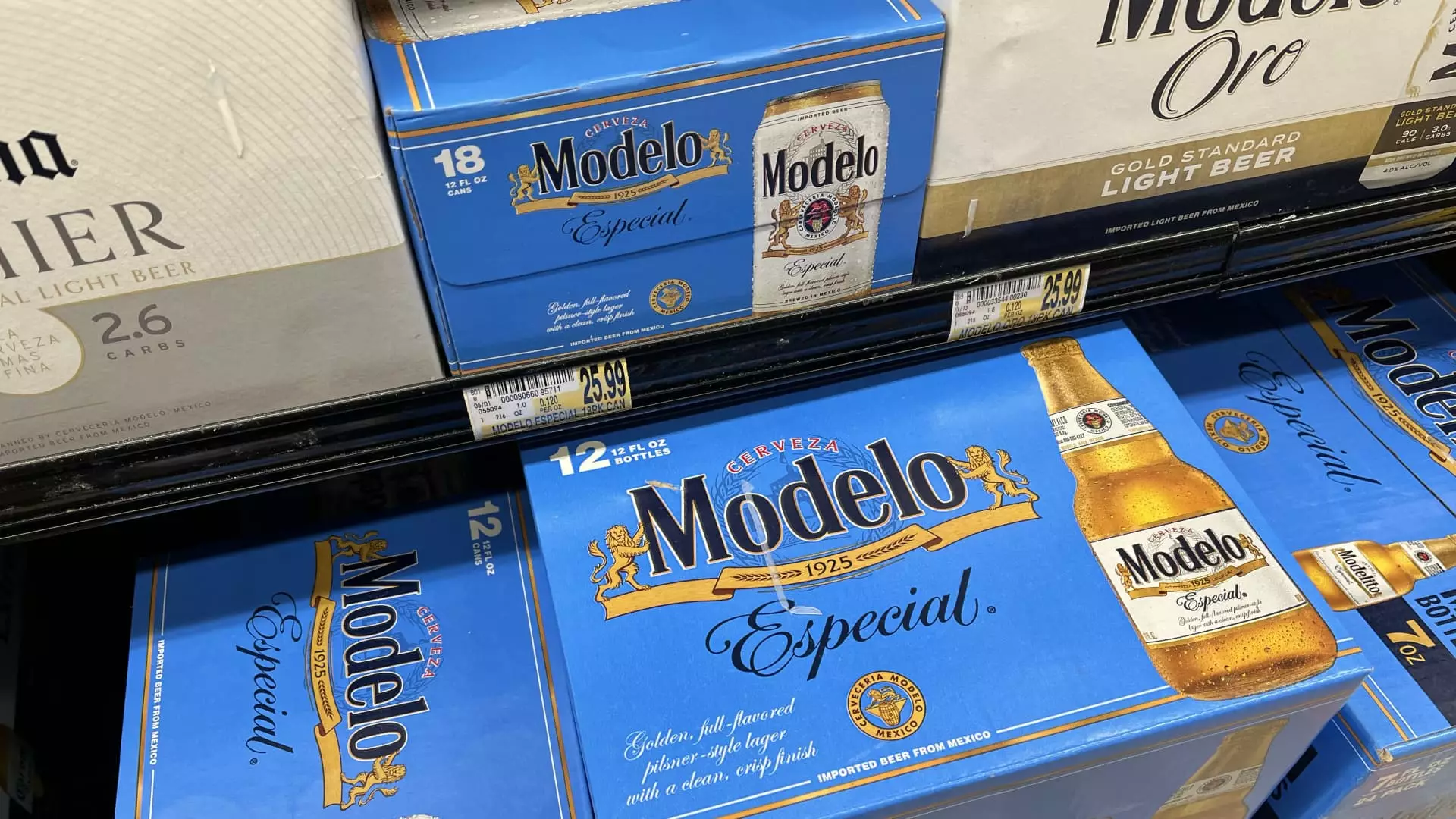In the tumultuous landscape of global trade, few industries face as stark a challenge as food and beverage – particularly the beer segment. Constellation Brands is currently grappling with significant hurdles exacerbated by newly imposed tariffs that threaten their revenue streams and overall market position. What once appeared to be a robust growth trajectory is now clouded with uncertainty as the company prepares for a fiscal 2026 that starkly contrasts previous expectations. This situation is not merely a reflection of external pressures but also suggests deeper, systemic issues within the company’s strategic direction.
Tariffs: A Double-Edged Sword
The latest imposition of a 25% tariff on imported canned beer, specifically limiting aluminum assets, has left Constellation Brands in a precarious position. President Trump’s new trade measures, while purportedly aimed at enhancing domestic production, effectively curtail the very essence of Constellation’s operations. As the owner of popular beer brands such as Modelo and Corona, Constellation Brands imports all its beer from Mexico, rendering it particularly vulnerable. The impending cost increases could significantly hinder profitability and, more critically, impact consumer prices, which raises the question: at what point will the customer push back against rising costs?
Stock Market Reaction: Giddy Optimism or Realistic Gloom?
In an almost bewildering twist, Constellation’s shares briefly surged by 7% amidst this chaotic announcement, suggesting a disconnect between investor sentiment and the underlying realities of the business. While the company did report earnings exceeding Wall Street’s cautious forecasts in the fourth quarter of fiscal 2025, the broader perspective is troubling. The market seems torn between short-term victories and the bleak future outlook pegged with flat to minimal growth projections. This juxtaposition of rising stock values against a backdrop of crumbling forecasts paints a picture of a market intoxicated by momentary highs, blind to looming dangers ahead.
Shifting Strategy: A Desperate Repositioning?
Adding layers of complexity is Constellation’s recent decision to divest its “mainstream” wine segment entirely. By pivoting towards premium brands, the company signals an attempt to emulate trends favoring higher-priced goods. But this begs the question: is it a strategic realignment or a desperate grasp for revenue in an increasingly competitive market? With brands like Svedka now sold off, it’s clear that the company is struggling to find its footing, opting to abandon what was once a key pillar of its portfolio. Yet, this shift is not merely reactive; it highlights a fundamental misunderstanding of evolving consumer preferences, particularly in a post-pandemic world where cheaper alternatives are gaining a stronger foothold.
The Future: Dim Prospects Ahead
Despite impressive quarterly earnings—$2.63 per share against expected $2.28—it’s the forecast that looms large in shareholders’ minds. The projected earnings per share for fiscal 2026 are an alarming drop from prior estimates, casting a pall over the entire enterprise. With anticipated organic sales oscillating between a 2% decline to slight growth, it is difficult to ascertain where Constellation can derive its strength moving forward. The downgrading of expectations for fiscal 2027 and 2028 serves only to deepen skepticism regarding the company’s strategic vision.
Furthermore, plans to curtail capital expenditures by nearly 40% in fiscal 2027 signal a retreat from ambitious growth initiatives. This reaction is not just about navigating tariffs; it indicates a lack of confidence in the landscape that Constellation itself has played a role in shaping. The reduced investments may help fortify the immediate budget, but they compromise necessary innovations and expansions needed to compete effectively long-term.
Constellation Brands stands at a critical juncture. While the beer market remains robust, tariffs and a hampered strategic vision threaten to undermine their success. As stakeholders and consumers alike look toward the future, the question remains: can this iconic company navigate the brewing storm and emerge stronger, or are they destined for a slow fade in a competitive industry that thrives on adaptation and resilience?

Leave a Reply